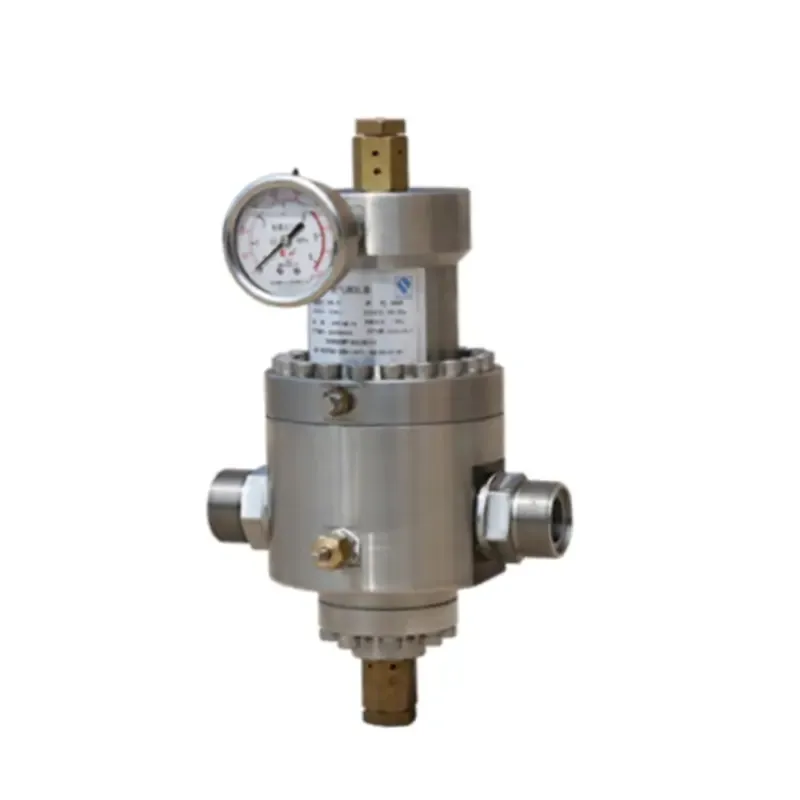
10 月 . 05, 2024 22:40
Back to list
Effective Solutions for Controlling and Reducing Pressure in Various Systems
The Importance of Pressure Reducing Devices in Modern Engineering
In various industrial applications, maintaining the appropriate pressure levels is crucial for ensuring both operational efficiency and safety. One of the key components in managing these pressures is the pressure reducing device, commonly referred to as a pressure regulator. These devices are essential in systems where high pressure needs to be lowered to a safe and manageable level before reaching the end-user or downstream equipment.
Pressure reducing devices serve multiple purposes across a wide array of industries, including oil and gas, chemical processing, water supply, and HVAC systems. They work by taking a high-pressure input and controlling the output to a lower, predetermined pressure. This not only protects equipment from damage due to excessive pressure but also promotes efficient operation and energy usage. For instance, in a gas pipeline system, a pressure reducing device ensures that the gas is delivered at a uniform pressure to end-users, which is vital for proper combustion in heating systems.
The design of pressure reducing devices varies considerably depending on the specific needs of the application. Common types include spring-loaded regulators, diaphragm regulators, and electronic pressure regulators. Spring-loaded regulators, for example, utilize a spring mechanism to adjust the valve opening based on the pressure settings. This type is widely used in gas and liquid applications. Diaphragm regulators, on the other hand, are more suited for applications requiring high accuracy and stability in pressure control. Electronic pressure regulators offer the highest level of precision, using sensors and feedback systems to continuously adjust the output pressure in real-time.
pressure reducing device

One of the primary benefits of using pressure reducing devices is the protection they provide to downstream equipment. Hydraulic systems, for example, can experience severe pressure spikes that may lead to component failure if left unchecked. By integrating a pressure reducing device, these systems can avoid catastrophic failures and prolong the lifespan of expensive machinery. Moreover, maintaining appropriate pressure levels helps optimize energy consumption and enhances the overall performance of the system.
In addition to protecting equipment, pressure reducing devices play a significant role in improving safety. High-pressure systems can pose serious hazards, including leaks, explosions, and other unsafe conditions. By effectively reducing and controlling pressure, these devices mitigate the risks associated with high-pressure operations. This is particularly important in industries like oil and gas, where safety is paramount due to the volatile nature of the materials being handled.
Moreover, the implementation of modern pressure reducing technologies is paving the way for increased efficiency in various operations. Many manufacturers are now producing smart pressure regulators equipped with IoT capabilities. These advancements allow for real-time monitoring and remote adjustments, making it easier for operators to ensure systems operate within safe and efficient parameters.
In conclusion, pressure reducing devices are indispensable in modern engineering and industrial applications. They not only ensure the safety and longevity of equipment but also contribute to the efficiency and reliability of operations. As industries continue to evolve and embrace technological advancements, the role of pressure reducing devices will only become more critical. By investing in high-quality pressure regulation solutions, businesses can enhance their operational safety, reduce costs, and foster a sustainable future.
Next:
Latest news
-
Unlocking The Quality Gas Pressure ReducersNewsNov.01,2024
-
The Role of Gas Pressure Reducing StationsNewsNov.01,2024
-
The Importance and Functionality of Safety Relief ValvesNewsNov.01,2024
-
The Essential Role of Safety Valves in Natural Gas ApplicationsNewsNov.01,2024
-
The Essential Role of Gas Pressure RegulatorsNewsNov.01,2024
-
Enhance Your Premium Gas FiltersNewsNov.01,2024

